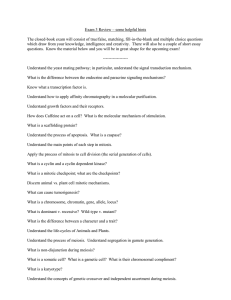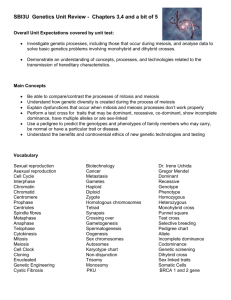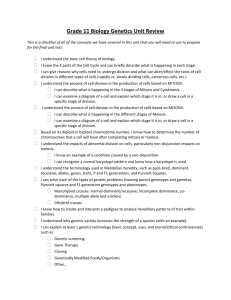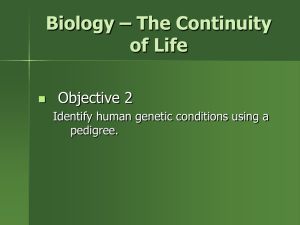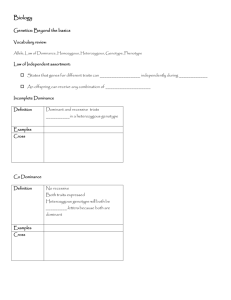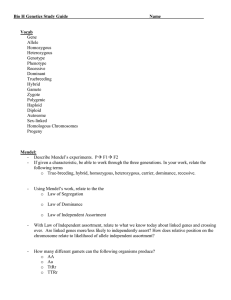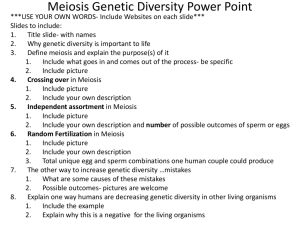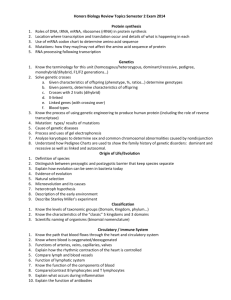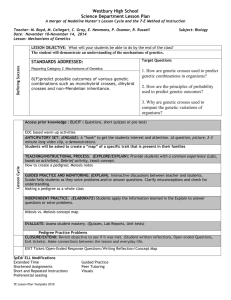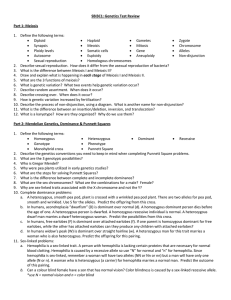3U Exam Review Diversity
advertisement
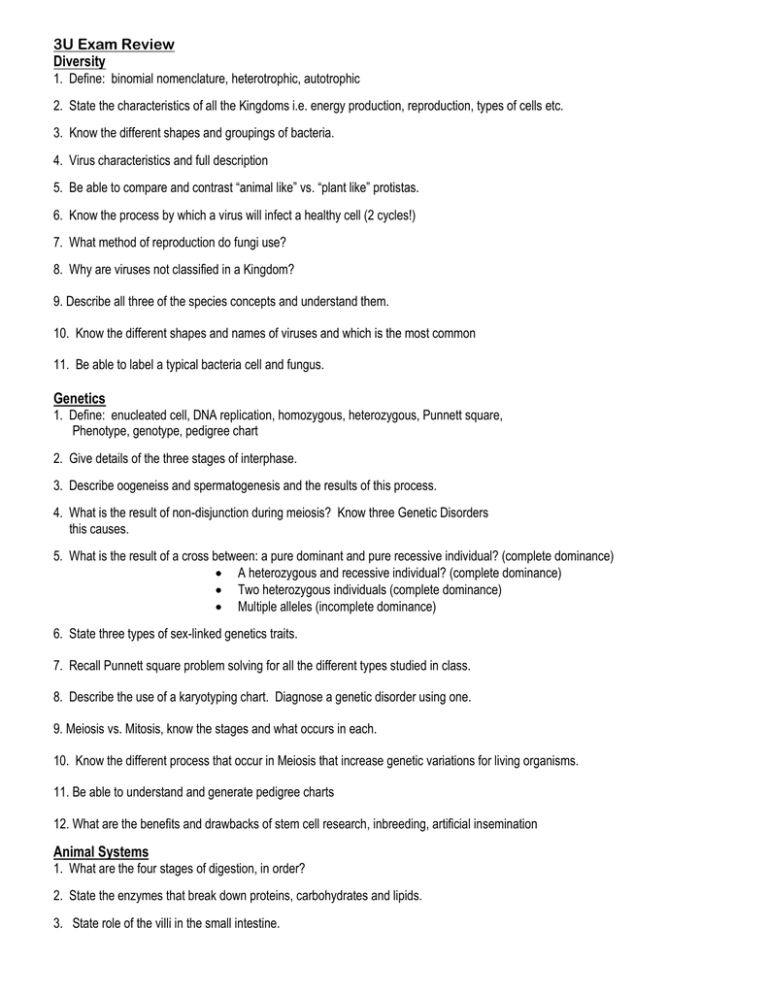
3U Exam Review Diversity 1. Define: binomial nomenclature, heterotrophic, autotrophic 2. State the characteristics of all the Kingdoms i.e. energy production, reproduction, types of cells etc. 3. Know the different shapes and groupings of bacteria. 4. Virus characteristics and full description 5. Be able to compare and contrast “animal like” vs. “plant like” protistas. 6. Know the process by which a virus will infect a healthy cell (2 cycles!) 7. What method of reproduction do fungi use? 8. Why are viruses not classified in a Kingdom? 9. Describe all three of the species concepts and understand them. 10. Know the different shapes and names of viruses and which is the most common 11. Be able to label a typical bacteria cell and fungus. Genetics 1. Define: enucleated cell, DNA replication, homozygous, heterozygous, Punnett square, Phenotype, genotype, pedigree chart 2. Give details of the three stages of interphase. 3. Describe oogeneiss and spermatogenesis and the results of this process. 4. What is the result of non-disjunction during meiosis? Know three Genetic Disorders this causes. 5. What is the result of a cross between: a pure dominant and pure recessive individual? (complete dominance) A heterozygous and recessive individual? (complete dominance) Two heterozygous individuals (complete dominance) Multiple alleles (incomplete dominance) 6. State three types of sex-linked genetics traits. 7. Recall Punnett square problem solving for all the different types studied in class. 8. Describe the use of a karyotyping chart. Diagnose a genetic disorder using one. 9. Meiosis vs. Mitosis, know the stages and what occurs in each. 10. Know the different process that occur in Meiosis that increase genetic variations for living organisms. 11. Be able to understand and generate pedigree charts 12. What are the benefits and drawbacks of stem cell research, inbreeding, artificial insemination Animal Systems 1. What are the four stages of digestion, in order? 2. State the enzymes that break down proteins, carbohydrates and lipids. 3. State role of the villi in the small intestine. 4. What type of blood cells are found in blood tissue. (Know their scientific names) Be able to recognize the three types of blood cells in a diagram 5. State the structure and function of all arterial blood vessels. What is carried throughout the blood around the body? 6. State the four type of valves in the human heart and the chambers they divide. 7. State the function and structure of the different organs in the Circulatory, Digestive & Respiratory systems. 8. Know the structures and their functions of the small and large intestine 10. Understand both the chemical and physical digestion that occurs around the digestive system. 11. Show the flow of blood through the human heart. 12. Sphincters vs. Valves and the different locations they are found in the human body. 13. Review the disorders of the digestive, respiratory and circulatory system Plant 1. Define: annual rings (how are they are formed), herbaceous stem cross-section 2. Identify pinnate, palmate, and parallel leaf vein patterns. 3. Describe the action of transpiration in the leaf. 4. Describe xylem & phloem – its function and structure. 5. Distinguish between tap and fibrous roots. 6. Distinguish between a monocot and a dicot. Give an example of each 6. Describe the structure and function of root hairs. 7. Label the cross-section of the leaf. State the function of each layer. 8. State the chemical and word equation of photosynthesis. 9. Be to describe the observations made during the lab activities done during this unit. (radish root seed, woody stem and celery) 10. What are some adaptations plants will make in response to biotic and abiotic factors Evolution: 1. Define: speciation, evolution, adaptation, natural selection, co evolution, and genetic variation, analogous structures, homologous structures 2. What are the different evidences of evolution? 3. Who is the Father of Evolution? 4. What observations did Darwin make in the Galapagos Islands. Be able to compare each of the scientists contributing theories to the theory of evolution. 5. Describe the different mechanisms of evolution (mutations, gene flow, non-random mating, genetic drift and natural selection) 6. What are the types of Natural Selection? 7. Describe the types of reproductive mechanisms and provide an example for each 8. What are the two patterns of Evolution? Scientific Method 1. State the order of scientific method.
